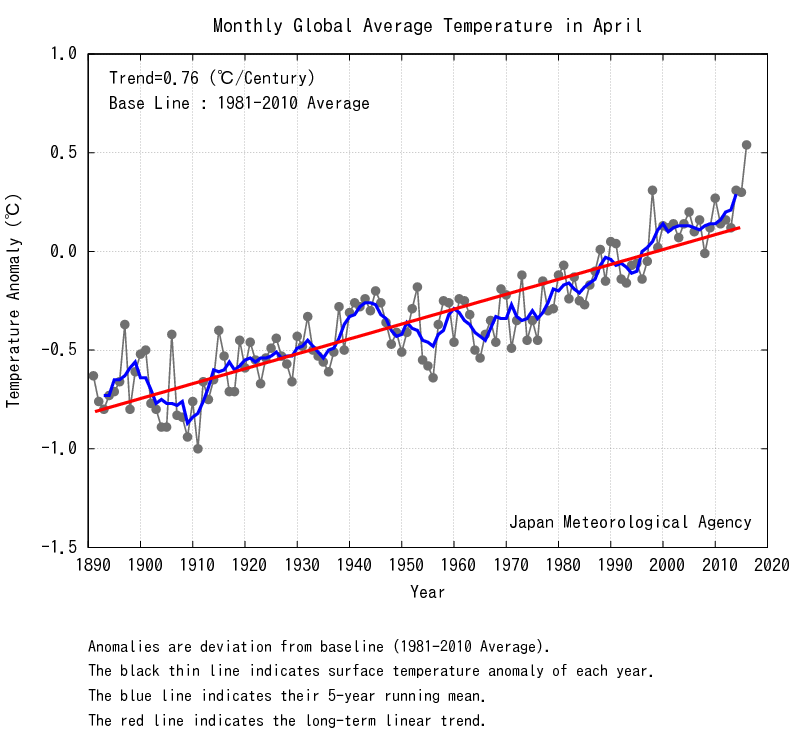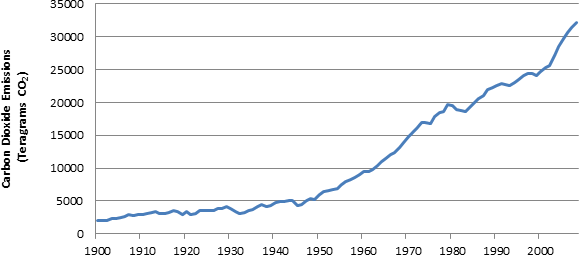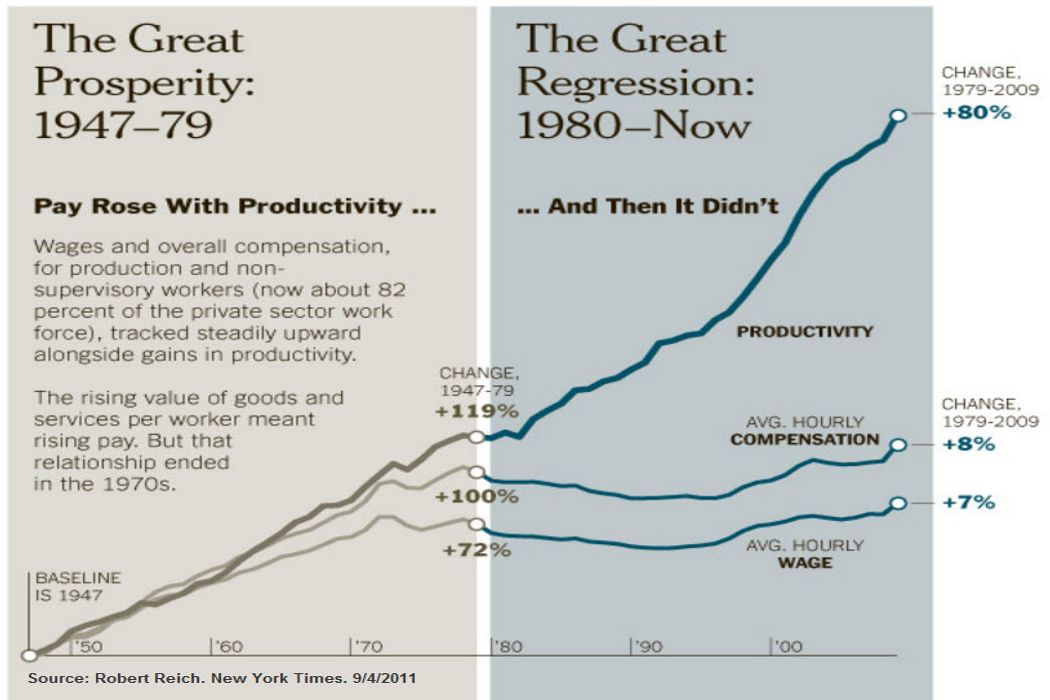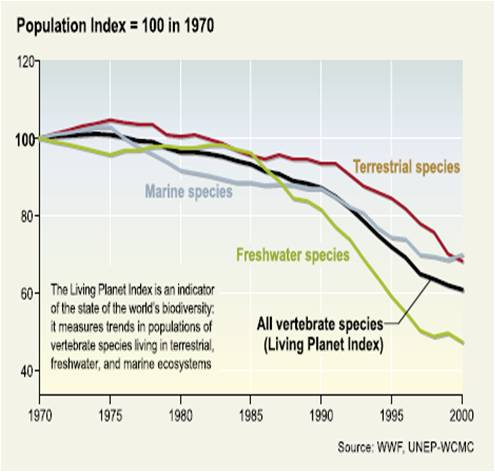|
|
PROGRESS AND PERFORMANCE
ENVIRONMENT
DEPLETION AND DEGRADATION OF NATURAL CAPITAL
|
SUN

|
LAND

|
WATER

|
AIR

|
RESOURCES

|
BIODIVERSITY

|
ECOSYSTEMS

|
|
|
Natural Resource Depletion
|
GO TOP
|
Club of Rome ... Limits of Growth (1970)
The message of this book still holds today: The earth’s interlocking resources – the global system of nature in which we all live – probably cannot support present rates of economic and population growth much beyond the year 2100, if that long, even with advanced technology. In the summer of 1970, an international team of researchers at the Massachusetts Institute of Technology began a study of the implications of continued worldwide growth. They examined the five basic factors that determine and, in their interactions, ultimately limit growth on this planet-population increase, agricultural production, nonrenewable resource depletion, industrial output, and pollution generation. The MIT team fed data on these five factors into a global computer model and then tested the behavior of the model under several sets of assumptions to determine alternative patterns for mankind’s future. The Limits to Growth is the nontechnical report of their findings. The book contains a message of hope, as well: Man can create a society in which he can live indefinitely on earth if he imposes limits on himself and his production of material goods to achieve a state of global equilibrium with population and production in carefully selected balance.
http://www.donellameadows.org/wp-content/userfiles/Limits-to-Growth-digital-scan-version.pdf
|
Open PDF ...
Limits-to-Growth-digital-scan-version.pdf
Open PDF external link ...
Limits-to-Growth-digital-scan-version.pdf
|
|
|
Environmental Degradation
|
GO TOP
|
|
Environmental Degradation
Environmental degradation is the deterioration of the environment through depletion of resources such as air, water and soil; the destruction of ecosystems; habitat destruction; the extinction of wildlife; and pollution. It is defined as any change or disturbance to the environment perceived to be deleterious or undesirable.
https://en.wikipedia.org/wiki/Environmental_degradation
|
Open Wikipedia link
|
Degradation of the Land
This is according to Wikipedia 180217
Land degradation is a process in which the value of the biophysical environment is affected by human-induced processes acting upon the land.
It is viewed as any change or disturbance to the land perceived to be deleterious or undesirable.
Natural hazards are excluded as a cause; however human activities can indirectly affect phenomena such as floods and bush fires.
This is considered to be an important topic of the 21st century due to the implications land degradation has upon agronomic productivity, the environment, and its effects on food security. It is estimated that up to 40% of the world's agricultural land is seriously degraded.
The TVM view is that undisturbed land is the natural equilibrium and that any changes from this change the state if the land ... for better or worse. For TVM, the accounting for these changes is very important. For most of modern history land 'development' was a process which had all the value of natural land replaced by the value of a physical development. From the perspective of money wealth creation this model has been very good, from the perspective of the environment it has been very bad. TVM seeks to have an acbounting for both the impact on physical capital and financial capital AND the impact on the natural capital (land element).
https://en.wikipedia.org/wiki/Land_degradation
|
Open Wikipedia link
|
|
Degradation of Feshwater
|
WATER

|
|
|
Degradation of Feshwater
One major component of environmental degradation is the depletion of the resource of fresh water on Earth. Approximately only 2.5% of all of the water on Earth is fresh water, with the rest being salt water. 69% of fresh water is frozen in ice caps located on Antarctica and Greenland, so only 30% of the 2.5% of fresh water is available for consumption.[5] Fresh water is an exceptionally important resource, since life on Earth is ultimately dependent on it. Water transports nutrients, minerals and chemicals within the biosphere to all forms of life, sustains both plants and animals, and moulds the surface of the Earth with transportation and deposition of materials
Current trends
There is an emerging 'water crisis' in some regions of the world. Today about one-third of the world's population is living under moderate or severe water stress, most notably in the Middle East and North Africa.
1.3 billion people lack access to adequate supply of safe water and 2 billion people do not have access to adequate sanitation. Water pollution is continuing to cause millions of preventable deaths every year, especially among children.
70 percent of the water withdrawn is used for irrigation; one-half is lost to seepage and evaporation.
Hydrological and ecological functions of over one-half of all wetlands have been altered due to encroachment.
Global freshwater biodiversity is declining significantly.
Increasing water pollution affects water availability by imposing additional costs for treatment.
Poor land use is imposing a heavy economic and environmental cost on water resources.
Underlying causes
Population growth, income growth, and rapid urbanization are increasing water demands for municipal, industrial, agri- cultural, and hydroelectric generation.
Water is treated as a social good and not an economic good, leading to its inefficient use, as in wasteful irrigation practices.
Excessive reliance on government for water and wastewater services.
Inadequate recognition of the health and environmental concerns associated with current practices.
Uncoordinated management of water between sectors, institutions and nations, with little regard for conflicts or complementarities between social, economic and environmental objectives.
Population pressures are increasing land degradation due to poor land management, thus worsening soil erosion and sediment transport in downstream areas.
Growing water scarcity worsens the effects of natural droughts that are endemic in many parts of the world.
Projected impacts of human activities on fresh and marine water resources
In 2025, up to two-thirds of the world's population, depending upon the rate of population growth, may experience moderate or severe water stress. These will mainly be people living in developing countries, whose limited technical, financial, and management capabilities will pose a disproportionate burden on their national economies.
Water pollution will continue to degrade freshwater and marine ecosystems.
Poor land use will continue to increase the frequency of flash floods, and will pollute coastal and marine ecosystems.
Social and economic consequences of projected changes
Surface and groundwater quality will be further degraded.
Provision of safe water in urban and rural areas will remain a major challenge in the future.
Human health risks from inadequate sanitation will continue to be a major concern, especially in urban areas.
Water use will need to be managed in a more holistic and multisectoral manner, i.e., agriculture, domestic, and industrial uses.
Economic impacts of land degradation on water resources will be exacerbated.
Conflicts between sectoral uses in some nations, and between nations in some regions of the world, will worsen. Tensions between riparian states sharing transboundary waters are likely to intensify.
Technologies, policies, and measures to mitigate the projected changes
At the national level, priorities include:
Placing greater emphasis on integrated, cross-sectoral water resources management, addressing quantity and quality concerns jointly.
Using river and groundwater basins as management units and recognizing freshwater, coastal, and marine environments as a management continuum.
Recognizing water as a scarce economic good, and promoting cost-effective interventions.
Supporting innovative and participatory efforts to manage water resources, and strengthening national capacities, in- cluding for women.
Linking land-use management with sustainable, integrated water-resources management.
Stimulate the adoption of a wide range of proven water-conserving techniques and technologies, especially water- conserving forms of agricultural irrigation.
At the more difficult international level, efforts need to:
Promote dialogue on basin-wide cooperation in such fields as information-sharing, capacity building, and technology transfers, as well as on regional development programs.
Focus on achievable goals without getting stuck on rights and allocation issues.
Source: 'Protecting Our Planet, Securing Our Future' UNEP / U.S. NASA / World Bank, 1997
|
https://www.gdrc.org/ngo/mea/factsheets/fs4.html
|
Open external link
|

800 750
|
Globally Temperature is Increasing
|

579 255
|
Carbon Dioxide Emissions are Increasing
|

|
Carbon Dioxide Concentrations are Increasing and so is Global Temperature
|

|
Highest temperatures ever going back 10,000 years
|
|
|
OVERVIEW
The modern socio-enviro-economic system is facing an existential crisis that is being ignored. The dominant metrics are all about economic growth (as in the GDP measure), corporate profits and stock market prices (that is financial wealth). There are all sorts of metrics that show that natural capital has been depleted in a very serious way over the past century (or two or three) but these metrics are not part of mainstream decision making at any level.
In order for the system to be optimized with ALL the population improving their quality of life, there will need to be major changes in the way measurement is done and reward allocated.Continuation of what has been done for the past many decades is not sustainable. Major proactive efforts are going to be needed in order to reverse the damage already done.
|
|
|
CLIMATE CHANGE
|

800 750
|
Globally Temperature is Increasing
|
|

579 255
|
Carbon Dioxide Emissions are Increasing
|
|

|
Carbon Dioxide Concentrations are Increasing and so is Global Temperature
|
|

|
Highest temperatures ever going back 10,000 years
|
|
|
CLIMATE CHANGE
|

800 750
|
Globally Temperature is Increasing
|
|

579 255
|
Carbon Dioxide Emissions are Increasing
|
|

|
Carbon Dioxide Concentrations are Increasing and so is Global Temperature
|
|

|
Highest temperatures ever going back 10,000 years
|
|

800 750
|
|
|

579 255
|
|
|
|
/////////////////////////
|
|
CLIMATE CHANGE
|

800 750
|
Globally Temperature is Increasing
|
|

579 255
|
Carbon Dioxide Emissions are Increasing
|
|

|
Carbon Dioxide Concentrations are Increasing and so is Global Temperature
|
|

|
Highest temperatures ever going back 10,000 years
|
|
|
IMPACT ON NATURAL CAPITAL
|
|
... and environmental trends are catastrophic
|

|
CO2 emissions
|

|
CO2 concentration
|

|
Temp v CO2
|

|
Sea level rise
|

|
|
|
|
Climate Change is Real and Accelerating
|
GO TOP
|
|
|

|
ALL the scientific data points to massive changes in the climate situation over the past hundred years AND accelerating
|
|
TPB Note: I had what would now be called a STEM focused education at school and then went on to study engineering at Cambridge. My training was so very different from what it takes to become a lawyer where a strong argument using words can change the outcome. In engineering it is scientific reality that drives the outcome, and no amount of verbal argument can make bad engineering stay together. Thank heavens it is engineers that design and build aircraft, and not lawyers, and especially lawyers who have become politicians!
|
|

|
Temperature rise
Global temperatures are on the rise again as 2016 has been marked as the hottest on record.
|

|
Global Land and Ocean Temperature Anomolies from 1880 to 2016
The temperature rise post 1980 has been continuous ... reflecting the massive increase in scale of industrial activity in the post war years.
|

|
Very long term temperative change ... a period of 10,000 years
The temperature rise in the last hundred years is 'off the chart'
|
|
Correlation and Causality for Temperature Rise
|

|
Global temperature and Carbon Dioxide
The level of carbon dioxide in the atmosphere has increased significantly over the same period 1880 to 2016
|
|
Ice Melt and Sea Level Rise
|

|
Sea Level Rise ... 1992 to 2016
Multiple measures for sea level rise show sea level rise has been substantial in recent years
|

Value of $ down
|

Wages flat
|
 CO2 concentration
CO2 concentration
|

Temp v CO2
|

Sea level rise
|

CO2 emissions
|
|
Decline of Biodiversity
|

|
Sea Level Rise ... 1992 to 2016
Multiple measures for sea level rise show sea level rise has been substantial in recent years
|
|
|
|

